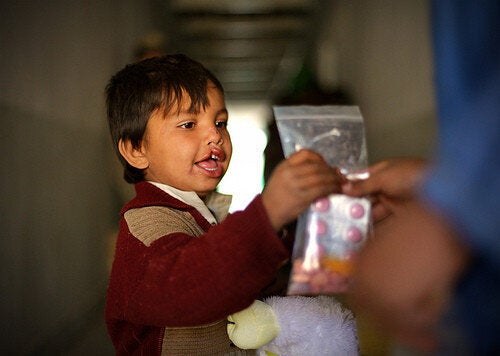
A recent post of mine discussed the palate (roof of the mouth), and in said post, I had mentioned cleft palate (and cleft lip). Since these are conditions that affect many people (and ones I am often asked about as well) I figured it would make for a good post on their own. So here we are.
Cleft Lip and cleft Palate can occur simultaneously, or independent of the other. In other words, having cleft lip does not necessarily mean cleft palate is present (and vice versa). But, both can occur to one individual as well.
The one thing you need to know before we talk about each one individually is how they are formed. Both cleft lip and cleft palate result from an incomplete development of the skull / facial area of a fetus. Generally, they are seen as a birth defect, although today, that seems like a pretty harsh term.
During gestation (the carrying of the fetus by the female body), the palate develops in a "left / right" aspect. A cleft is the result when the two sides do not fully fuse. Sometimes it's in the palate, sometimes it's in the lip, and other times, it's both places. Cleft Palate or cleft Lip are present in roughly one in seven hundred births, making it a fairly common condition.
Let's look a little closer at each one:
Cleft Palate
Cleft Palate occurs when the two sides of the palate (the roof of the mouth) do not fully fuse together. The results of this "non-fusion" vary with the individual -- for some people, it may be nothing more than a small gap running down the middle of the palate -- for others, it might mean a "hole" in the roof of the mouth, and a split uvula (that little thing that hangs down in the back of your mouth).
A cleft Palate can result in unrestricted airflow between the mouth and nasal passages. In fact, one of the leading afflictions associated with cleft palate is VPI (Velopharyngeal Inadequacy), which can result in nasal-sounding speech, amongst other things. cleft Palate can also result in some dental and tooth problems, and, depending on severity, may even impede tooth development.
Of the two, cleft Palate is the one you don't hear so much about, because it's not readily apparent, and may be relatively minor. You may know people with a cleft palate and be completely unaware that they have it.
Cleft Lip
Sometimes called a "Harelip," a cleft lip is readily apparent, as it means the upper lip has not fully developed. Sometimes it can be relatively minor; other times, it can be extremely pronounced, with a complete gap between the upper lip and nasal passages. Cleft lip can occur on either the right or left side, or sometimes, both.
Obviously, speech can be affected by such a condition, and care needs to be taken on feeding an infant with cleft lip as well. And, like cleft palate, dental issues could occur, since proper distribution/flow of saliva past teeth is not always possible.
However, far and away the biggest issue with cleft lip is the obvious social stigma that comes with any facial deformity. Just Google "Cleft Lip" and you'll see exactly what I am talking about. This is not so much an issue for infants, as infants and very young children with even severe cleft lip show no difference in self-concept than their non-clefted peers. However, this obviously will change the minute the child gets on his or her first school bus.
Fortunately, with today's advances in cosmetic surgery and such, cleft lip is usually very treatable. If treatment and reconstruction is started early, by the time the child is school age, there may be little to no indication that condition ever existed, and the child may even be surprised by his or her early photographs. Other times, there might be some scarring or a partial cleft left, but still, I almost always recommend immediate surgery.
Causes
We do not know what causes cleft lip and cleft palate. In my research, I found nothing definitive -- some reports say certain vitamins are a possible cause, others say it's genetic and "runs in families." I won't say anything authoritative here, as it's all speculation at this point (however, on a personal note, I feel a lot of afflictions are genetic and run in families. Seems to be a fairly sound, logical step to take, no?) One interesting tidbit I did come across was the fact that cleft lip and cleft palate seemed to be higher in Asian children. But besides that, it would appear the jury is still out. And we may never really know what causes it.
However, despite not getting to the root of the cause, in the end, I'm pleased that we've come so far in treating this affliction, especially cleft lip. It gives those afflicted a new lease on life, that's for sure.
I hope this has been informative to you, and gives you a little more insight into this somewhat misunderstood condition.
Until next time, keep smiling.
References: